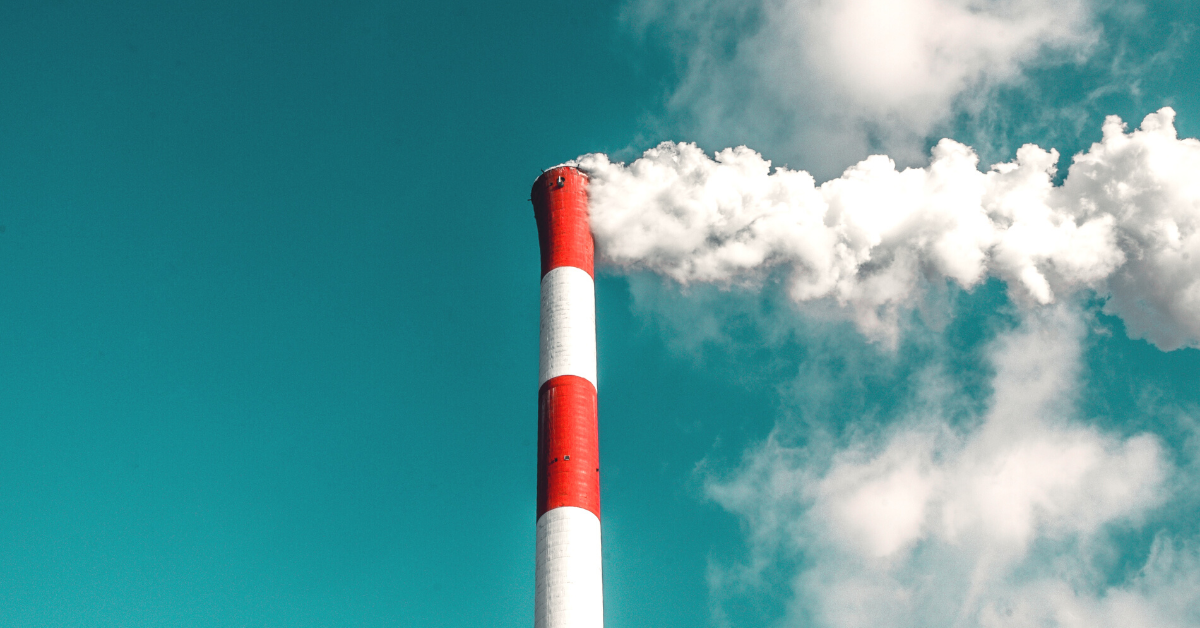The COP26 is over – but what are the outcomes and how do they effect the Global South?
 Photo: Climate change emissions / Unsplash.
Photo: Climate change emissions / Unsplash.
The COP26 UN Climate Change Conference came to an end in the evening of November 13. Researchers across the globe has since then analysed the outcomes, highlighting both successes and failures. Assessments show that the agreements made at COP26 result in a best case scenario of a global warming between 1.8-2.4 degrees, indicating that the world needs to do more if the 1.5 degrees target of the Paris Agreement is to be met.
SweDev had a talk with three researchers from Swedish institutions who participated at the global meeting to hear their thoughts and reflections. The second person in this series of three interviews is Stephen Woroniecki, PhD, Department of Thematic Studies, Centre for Climate Science and Policy Research, Linköping University.

Stephen Woroniecki. Photo: Private.
What were the most successful and least successful outcomes of COP26 according to you?
In my reading, the agreement on levelling up adaptation finance is probably the most significant. The commitment to hold the ambition in line with 1.5 degrees is also crucial. Elsewhere, the confirmation of the Paris Rulebook is a strong indication that the multilateral process is functioning. The most concerning part was the failure for rich countries to establish a Loss and Damage financial mechanism and give adequate resources to the issue of Loss and Damage in the face of overwhelming and undivided calls from the Global South.
Do you think that the agreement at COP26 is based on research and knowledge? If no, what can be done to increase the use of research?
Science is well represented in the introduction and some of the other parts of the agreement, and also helps to make the case for the 1.5 degree target. The overwhelming agreement in the multilateral process towards taking ambitious climate action is based on scientific consensus. The IPCC Special Report on 1.5 degrees has no doubt helped to demonstrate the importance of maintaining this goal, rather than the less ambitious 2 degrees target. As far as I could tell, there was a general awareness of the IPCC findings in the COP26 venue.
Otherwise, knowledge in the negotiations could be understood as contextual and tacit, including parties’ knowledge of national politics and governance, as is fitting since these negotiators represent the national interests of different countries. I do not think it is appropriate to say there an an “objective” or scientific way to approach the negotiations, and the EU and/or US positions should not be understood as “objective”, since their particular interests are also represented in their positions. This can help to understand why countries do not just “follow the science”.
There are specific calls for understanding better adaptation and vulnerability (especially in regard to targeted finance) in the agreements that deserve greater attention from scientists, to ensure that their work directly serves the needs of the most vulnerable states. More so, it is my opinion that Loss and Damage could be better represented in the IPCC in order to further support the most vulnerable.
One of the big battles of COP26 was around how much money the Global North would give to the Global South. Did the negotiations show enough consideration for the Global South and their fragility to climate change?
No, as they failed to live up to their promise to deliver 100B USD per year by 2020. This damages trust in the process and enforces historical injustice. The 100B USD should be seen as a floor not a ceiling, given that the needs are much greater than this small amount. Negotiating parties from the Global South rightly pushed that the agreement should reflect that finance should rise fast and soon.
There was some positive change in the recognition that finance needs to be better balanced between mitigation and adaptation. Also, that the Green Climate Fund and Global Environmental Facility needs to improve fast, and become more transparent and accessible. The parties also recognised the success of the Adaptation Fund, which could lead to the fund becoming a financial model (that works for vulnerable states) in the future.
I do not think it is an exaggeration to say that the injustice expressed in the climate arena is vast, as historical international relations such as colonialism, unfair trade policies and predatory extractivism pave the way for the current inequality between countries. All of this leads directly to climate injustice, yet these historical relationships are not appropriately recognised by developed countries – who would still rather wipe the slate clean.
The above leads to strange outcomes, such as blaming India and China for being climate laggards for not getting rid of coal, whilst richer countries have mostly been able to transition to oil and gas at an earlier stage. Rich nations are extremely nervous of even opening the door to ideas of historical responsibility and liability. This is why the Paris agreement includes Loss and Damage (in Article 8) but then explicitly outlines how this acknowledgement of the issue cannot be used to address questions of liability. There will be enormous frustration if the Glasgow dialogue on Loss and Damage does not lead to a loss and damage finance facility in the very near future, and all eyes will be on this issue in the run up to COP27, any other outcome would be an insult to the Global South and compound past broken assurances.
More so, Covid has devastated climate-vulnerable states driving them deeper into debt. Innovative financing mechanisms and accessible, cheap finance are vital to allow these countries to build resilient societies and deal with loss and damage.
This interview is part of a series of three, read the other two interviews with Aysem Mert and Lisa Dellmuth.
